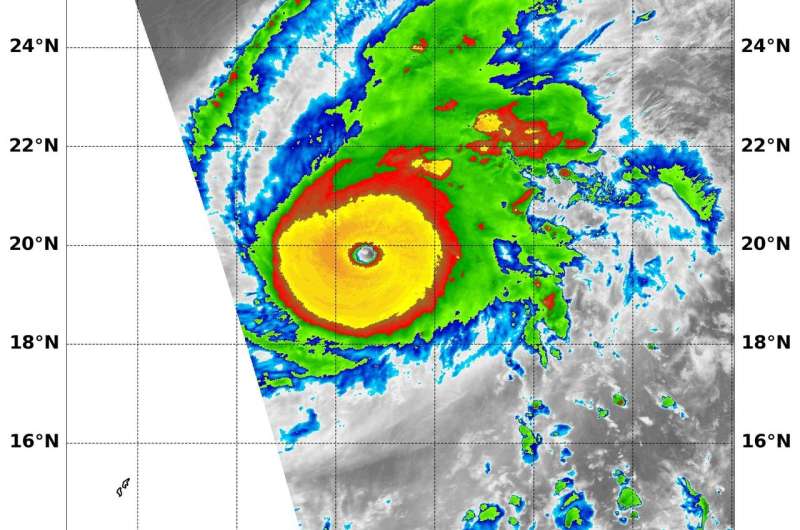NASA finds thick ring of powerful storms around Super Typhoon Halong's eye

Typhoon Halong continued to strengthen and has become a super typhoon in the Northwestern Pacific Ocean. Infrared imagery from an instrument aboard NASA's Terra revealed a thick ring of very high, powerful storms with very cold cloud top temperatures circling the eye.
Tropical cyclones are made of up hundreds of thunderstorms, and infrared data can show where the strongest storms are located. They can do that because infrared data provides temperature information, and the strongest thunderstorms that reach highest into the atmosphere have the coldest cloud top temperatures.
On Nov. 5 at 6:40 a.m. EST (1140 UTC), the Moderate Imaging Spectroradiometer or MODIS instrument that flies aboard NASA's Terra satellite used infrared light to analyze the strength of storms within the tropical cyclone. MODIS found the strongest storms in the very thick and large area of thunderstorms circling Halong's eight nautical-mile wide eye. Those storms had cloud top temperatures as cold as or colder than minus 80 degrees Fahrenheit (minus 62.2 Celsius). NASA research has found that cloud top temperatures that cold indicate strong storms with the potential to generate heavy rainfall.
On Nov. 5 at 10 a.m. EDT (1500 UTC), Super typhoon Halong had maximum sustained winds near 140 knots (161 mph 259 kph). That makes Halong a powerful Category 5 hurricane on the Saffir-Simpson Hurricane Wind Scale.
Halong was located near latitude 19.9 degrees north and longitude 150.8 degrees east, about 603 nautical miles east-southeast of Iwo To island, Japan. Halong was moving to the northwest.
Forecasters at the Joint Typhoon Warning Center expect Halong will move northwest and then to the north, then northeast. The storm is now at peak intensity and is expected to weaken after today.
Provided by NASA's Goddard Space Flight Center



















